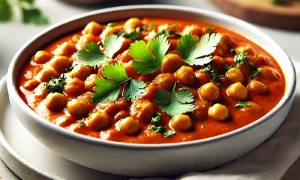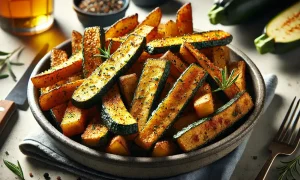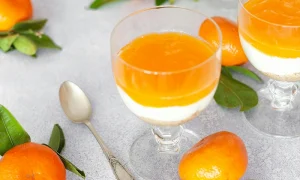11 Great Vegan Protein Sources

Protein is an essential macronutrient that plays a vital role in our body’s growth, repair, and maintenance. A common misconception is that vegans struggle to get enough protein because they don’t consume animal products. However, this couldn’t be further from the truth.
There are numerous plant-based protein sources that can help vegans meet their daily protein requirements. If you know what to eat, you’ll have no problem achieving your needed protein intake through plant-based foods.
We’ll explore the top 11 plant-based protein sources that are not only nutritious but also delicious and versatile.
#1: Legumes
Overview and Nutritional Benefits of Legumes
Legumes, such as lentils, chickpeas, black beans, and kidney beans, are an excellent source of plant-based protein. They are also rich in fiber, vitamins, and minerals, making them a healthy and nutritious addition to any vegan diet. Depending on the type of legume, protein content can range from 15 to 25 grams per cooked cup.
Examples of Legumes
- Lentils
- Chickpeas
- Black beans
- Kidney beans
Lentils are available in various colors, such as green, brown, and red. They are versatile and can be used in salads, soups, and stews. Chickpeas, also known as garbanzo beans, can be roasted, mashed, or used in dishes like hummus and falafel. Black beans and kidney beans are popular in Latin American cuisine and can be used in dishes like burritos, chili, and salads.
Recipe Ideas and Cooking Tips for Legumes
To increase protein intake, consider adding legumes to salads, soups, and grain bowls. You can also make veggie burgers, lentil meatballs, or bean-based pasta sauces.
#2: Tofu
Overview and Nutritional Benefits of Tofu
Tofu, made from soybean curds, is a versatile and protein-rich food. It contains about 10 grams of protein per half-cup serving and is also a good source of calcium and iron. Tofu is available in various textures, from silken to extra firm, which makes it suitable for a wide range of dishes.
Different Types of Tofu and Their Uses
- Silken tofu has a soft, custard-like texture and works well in smoothies, dressings, and desserts.
- Firm and extra-firm tofu have a denser texture, making them perfect for stir-fries, grilling, and baking.
Tofu Recipe Ideas and Cooking Tips
Tofu can be marinated, grilled, stir-fried, or even scrambled like eggs. Try adding tofu to curries, stir-fries, and sandwiches, or use it as a base for vegan cheese and sauces.
#3: Tempeh
Overview and Nutritional Benefits of Tempeh
Tempeh, made from fermented soybeans, is another excellent source of plant-based protein, containing around 19 grams per 3-ounce serving. It also provides probiotics that promote gut health and is a good source of iron, calcium, and magnesium.
How Tempeh Differs from Tofu
Tempeh has a denser texture and nuttier flavor compared to tofu. It’s less processed, making it a more whole-food option for those looking for minimally processed protein sources.
Tempeh Recipe Ideas and Cooking Tips
Tempeh is very versatile and can be prepared in many ways:
- Sliced
- Crumbled
- Cubed
- Added to salads
- Sandwiches
- Stir-fries
- Marinated and grilled
- Pan-fried
- Baked
Check out our comparison on Tempeh vs. Tofu →
#4: Edamame
Overview and Nutritional Benefits of Edamame
Edamame, or immature soybeans, is a delicious and nutritious protein source containing about 18 grams of protein per cooked cup. They are also rich in fiber, vitamins, and minerals, including vitamin K, folate, and manganese.
Edamame Recipe Ideas and Cooking Tips
Edamame can be served in the pod as a snack, appetizer, or side dish. You can also shell the beans and add them to salads, grain bowls, or stir-fries.
To prepare edamame, simply boil or steam the pods until tender and then sprinkle with sea salt. Shelled edamame can be added to pasta dishes, grain salads, and vegetable stir-fries for an extra protein boost.
#5: Quinoa
Overview and Nutritional Benefits of Quinoa
Quinoa, a gluten-free pseudo-grain, boasts 8 grams of protein per cooked cup. It is a complete protein, containing all nine essential amino acids, and is also rich in fiber, magnesium, and iron.
How to Cook Quinoa
Rinse quinoa under cold water before cooking to remove its natural bitter coating. Cook quinoa in a 1:2 ratio of quinoa to water or broth, bringing the mixture to a boil and then reducing to a simmer for about 15 minutes or until tender and fluffy.
Quinoa Recipe Ideas and Cooking Tips
Quinoa can be used as a base for:
- Salads
- Grain bowls
- Veggie burgers
You can also mix it into:
- Stews
- Use it as a stuffing for vegetables
- Breakfast dishes like quinoa porridge or smoothie bowls
#6: Seitan
Overview and Nutritional Benefits of Seitan
Seitan, also known as wheat meat, is made from wheat gluten and provides around 25 grams of protein per 3.5-ounce serving. It has a meat-like texture, making it a popular choice for vegan meat substitutes.
Seitan Allergy Considerations (gluten)
Seitan is not suitable for individuals with celiac disease or gluten sensitivity, as it is made from wheat gluten. Consider other gluten free protein options in this list like quinoa, or soybean-based choices if you have a gluten intolerance.
Seitan Recipe Ideas and Cooking Tips
Seitan can be prepared in several different ways depending on the dish you’re making: sliced, cubed, or shredded.
It can be used in various dishes, such as:
- Stir-fries
- Sandwiches
- Stews
- Marinated
- Grilled
- Pan-fried
#7: Nuts and Seeds
Overview and Nutritional Benefits of Nuts and Seeds
Nuts and seeds, such as almonds, peanuts, chia seeds, and hemp seeds, are not only protein-rich but also packed with healthy fats, fiber, vitamins, and minerals. Protein content varies depending on the nut or seed, ranging from 5 to 10 grams per ounce.
Examples of High-Protein Nuts
There are many great options to consider when including nut and seed varieties into your diet. You can even use them to create various plant-based nut milks easily!
- Almonds
- Peanuts
- Cashews
- Pumpkin seeds
- Chia seeds
- Hemp seeds
Almonds and peanuts can be consumed whole, chopped, or ground into nut butter. Chia seeds can be added to smoothies, oatmeal, or yogurt, while hemp seeds can be sprinkled on salads, grain bowls, or avocado toast.
Nuts & Seeds Serving Suggestions
Incorporate nuts and seeds into your diet by adding them to smoothies, oatmeal, yogurt, or as toppings on salads and grain bowls. You can also make your own trail mix or enjoy nut butter on toast or fruit.
#8: Nutritional Yeast
Overview and Nutritional Benefits of Nutritional Yeast
Nutritional yeast, a deactivated yeast, is a great source of plant-based protein, providing about 8 grams per 2-tablespoon serving. It is also rich in B vitamins, particularly B12, which is important for vegans as it is typically found in animal products.
Nutritional Yeast Recipe Ideas and Cooking Tips
Nutritional yeast has a cheesy, nutty flavor and can be used to add a savory taste to various dishes.
Sprinkle nutritional yeast on popcorn, salads, and roasted vegetables for a flavor boost. You can also use it to make vegan cheese sauces, pesto, or as a seasoning for tofu scrambles and roasted chickpeas.
#9: Spirulina
Overview and Nutritional Benefits of Spirulina
Spirulina, a blue-green algae, is a potent source of plant-based protein, containing about 4 grams per tablespoon. It is also rich in vitamins, minerals, and antioxidants, making it a nutrient-dense addition to your diet.
Spirulina Recipe Ideas and Cooking Tips
Spirulina is typically available as a powder or tablet supplement. The powder can be added to smoothies, juices, or energy bars for an extra protein and nutrient boost.
Try incorporating spirulina into your morning smoothies, homemade energy bars, or salad dressings. You can also experiment with spirulina in raw dessert recipes, such as energy bites or raw cheesecakes.
#10: Green Peas
Overview and Nutritional Benefits of Green Peas
Green peas, a humble yet protein-packed vegetable, provide around 8 grams of protein per cooked cup. They are also a good source of vitamins A, C, and K, as well as various minerals, such as manganese, iron, and phosphorus.
Green Peas Recipe Ideas and Cooking Tips
Green peas can be enjoyed as a side dish, mixed into salads or grain bowls, or incorporated into soups and stews for added texture and nutrition.
Try adding green peas to so sorts of dishes for a unique and protein-rich sauce.
- Pastas
- Stir-fries
- Curries
- Green pea pesto
You can also blend cooked green peas with herbs and spices to create a vibrant and healthy dip or spread.
#11: Whole Grains
Overview and Nutritional Benefits of Whole Grains
Whole grains, such as brown rice, barley, and bulgur, are not only a source of complex carbohydrates and fiber but also provide a moderate amount of protein.
Depending on the grain, protein content can range from 5 to 8 grams per cooked cup.
Examples of Whole Grains to Include in Your Diet
- Brown rice
- Barley
- Bulgur
Brown rice, barley, and bulgur can be used as a base for salads and grain bowls, or served as a side dish to complement your main protein source.
Whole Grains Recipe Ideas and Cooking Tips
Experiment with different whole grains in your dishes, such as using barley in soups and stews, or incorporating bulgur into salads and pilafs. Brown rice can be used as a versatile base for veggie stir-fries, sushi rolls, or stuffed peppers.
Up Your Vegan Protein Game
This list of plant-based protein sources highlights the variety of options available to vegans looking to meet their protein needs. By incorporating these foods into your diet, you can enjoy a diverse range of flavors and textures while ensuring that you get the essential nutrients necessary for optimal health.
Don’t be afraid to experiment with new ingredients and recipes, and embrace the delicious and nutritious world of plant-based eating.




















